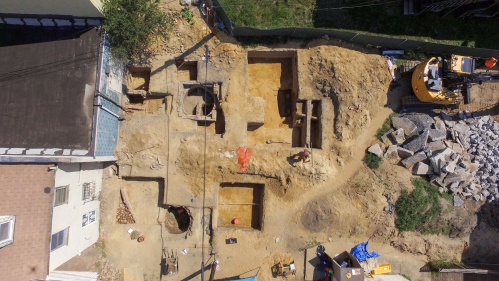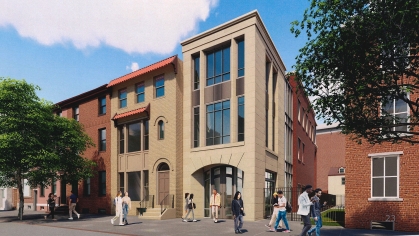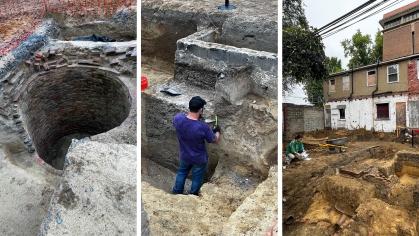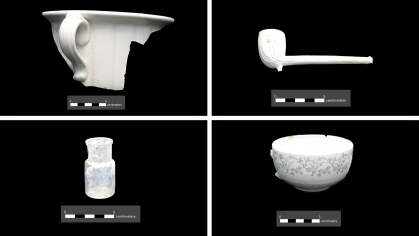Exploring Cooper Street’s Past and Future

Archaeological work being conducted as part of the Cooper Street Gateway project reveals the rich history of Camden.
Behind the fences surrounding the site of the $60 million Cooper Street Gateway project on the campus of Rutgers–Camden, a careful, focused effort is underway to uncover the site's long history.
“This property, represents a unique opportunity to understand the history of the people that came before us and get a snapshot of what life was like in the late 19th and early 20th centuries in Camden,” said Kimberlee Moran, associate teaching professor in the department of sociology, anthropology, & criminal justice at Rutgers University–Camden.
Announced last spring, the Cooper Street Gateway will transform 14 vacant historic properties and several empty lots along the 400 block of Cooper and Lawrence Streets into a dynamic new facility. Though the university is eager to begin construction, preserving the integrity of the historic buildings and any potential artifacts that could be discovered is also paramount.
The first phase of the process, governed by regulations issued by the New Jersey Historic Preservation Office, involved a comprehensive site survey, including an investigation into the properties' historical ownership and use, a field investigation, data collection, and analysis.
The work of a professional, outside environmental engineering team was supported by Charlene Mires, professor emerita of history with Rutgers–Camden, who has done extensive research on the history of Cooper Street. She developed the interpretive planning guide that served as the foundation for excavating the site.

“The three-story houses facing Cooper Street, once the city’s most fashionable thoroughfare, hold the histories of prosperous investors of the 19th century, widows who inherited property, and 20th century entrepreneurs who converted houses into commercial properties,” Mires wrote. “In contrast, the smaller two-story rowhouses on narrower Lawrence Street sheltered a more diverse range of Camden’s working class, including European immigrants and Black migrants from southern states.”
Armed with Mires’s detailed history of the land, the engineering team began excavating the site. An initial survey using ground-penetrating radar allowed the team to identify potential areas of interest, which quickly revealed signs of life from the many different people who had called the site home over the years.

“We uncovered several different privies, one wood-lined and two that are circular brick,” said Scott Wieczorek, the lead archaeologist on the project. “This has offered tremendous insight into the lives of the people that lived here, because privies were used for the disposal of items from the household.”
Digging by hand revealed various culturally significant items, including china dishes and bowls, a nearly intact vase, and a pipe in almost perfect condition.

Everything recovered will be transferred to Rutgers–Camden for further research on the historical households of Camden. Additionally, some artifacts will be on display in the new building, along with interpretive signage and a video documenting the excavation.
“We plan to both care for the items found and breathe new life into them as a continual reminder of the communities of the past and how they can inform who we become in the future,” Moran said.


